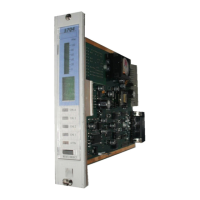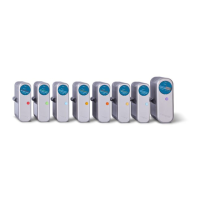10
XLS80e Fire Alarm Control Panels
Honeywell, Issue 9
March 2007
3.2 Configuration Actions
The following configuration actions can be
performed:
a. An unconfigured panel can scan the loops
and learn what devices are installed, either
automatically or with manual user
intervention. Refer to Section 3.6.
b. Groups of devices on a configured panel can
be selected for deletion or change to a
different logical type. Refer to Section 3.7.
c. Individual devices can be added, removed
or changed manually. Refer to Section 3.8.
d. The panel zone and device text descriptions
can be edited. Refer to Section 3.9.
e. The relationship between input devices (e.g.
sensors, manual call points) and output
devices (e.g. sounders) can be configured.
This is done in the Control Matrix, which is
a table of inputs, outputs and relationships.
Refer to Section 3.10.
g. The status of devices (e.g. the sensitivity)
can be set to vary depending upon the time
of day. Refer to Section 3.11.
h. The panel clock can be adjusted. Refer to
Section 3.12.
i. Various temporary and permanent
configuration options can be set. Refer to
Section 3.13.
j. The panel can be configured to be part of a
network. Refer to Section 3.14.
k. Sounders or remote fire outputs can be
delayed. Refer to Section 3.15.
l. Virtual input and output points can be
configured. Refer to Section 3.16.
LOOP DEVICE CONFIGURATION - Sections 3.6-3.8
TEXT EDITING - Section 3.9
CONTROL MATRIX - Section 3.10
TIME-OF-DAY - Section 3.11
CLOCK SETTINGS - Section 3.12
PANEL SETTINGS - Section 3.13
NETWORKING - Section 3.14
Z X C V B N M
Q W E R T Y U I O P
A S D F G H J K L
?
?
DELAYS - Section 3.15
Certain options on non-configuration menus
also require the access level 3 or 3A passcodes.
These options are described in Section 12.
VIRTUAL POINT CONFIGURATION - Section 3.16

